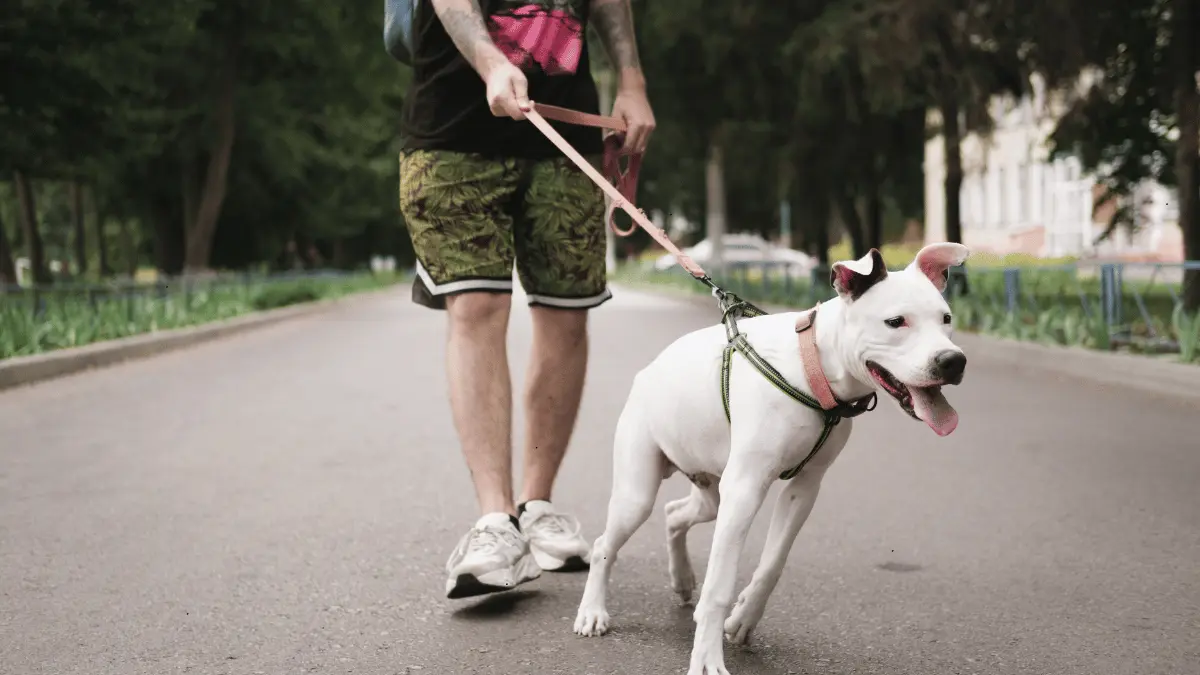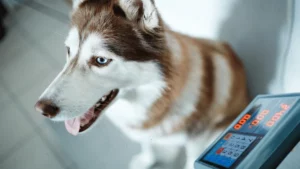How I Stopped My Dog From Pulling on the Leash
Learn how I successfully stopped my dog from pulling on the leash. Discover effective techniques for a more enjoyable walking experience!
One thing I find most admirable at a park is watching dogs walk with their owners effortlessly. Another dog comes into the area? No worries at all; three kids calling out incessantly? Not likely; their attention won’t likely be drawn by that dog either!
My experience walking my dog was completely unique; I was responsible for keeping her calm while walking and controlling her when someone crossed our path, all while holding onto its leash with an iron grip even when nothing was happening as pulling was often part of walking.
Once upon a time, I discovered some walking techniques that helped. After researching and studying everything available on this subject matter, I developed strategies that proved successful. In this article we’ll take a closer look at why dogs pull on leashes as well as strategies you can employ to stop this action, while discussing why consistency is so vital when dealing with dog ownership and training.
Here is my experience in getting my pet to stop pulling on its leash:
Why Dogs Pull on Leashes
Before diving into how to stop your pup from pulling on his leash, let’s quickly review why dogs pull. Knowing why your pup pulls makes managing his behavior much simpler.
Dogs pull on leashes as part of their normal canine behavior; although it might not be desirable, pulling is how they get to where they need to go at their own pace. Pulling is their form of travel!
Your dog doesn’t pull on his leash out of any desire to appear dominant; rather, they do it because it works. So when you walk behind them while they pull, and respond by moving forward towards where they want to go, you are simply teaching and rewarding this behavior by moving in that direction.
If your dog has become used to pulling on leash, breaking this habit may be challenging. Once they become accustomed to moving forward while pulling, their behavior becomes embedded and may cause them to continue pulling in order to move faster – yet with perseverance and patience you can gradually break their pull habits by showing your pup that walking alongside is much more rewarding!
Not All Methods Will Work Perfectly For Every Dog
As soon as it comes to teaching your dog not to pull on the leash, the first thing to keep in mind is that not every method works for all dogs (this applies more broadly). I tried many approaches when it comes to loose leash walking but never found one to work. So if you have read about loose leash pulling in the past and failed to see results then don’t feel discouraged; many others may be having similar difficulties too!
Training your dog requires understanding what motivates him or her and exploiting this. With Laika, I focused on methods offering great incentives – such as delicious treats or toys as reinforcement.
Have you heard of “be a tree tip?” It works like this — when your dog starts pulling on walks, when that occurs you stop immediately and stand still, in order to teach him that pulling means pausing his walk and thus not pulling. He should soon stop doing this himself!
What happened when I tried that with my excitable dog that had become used to pulling on leash? She even pulled harder until she reached where she wanted and became frustrated when I wouldn’t move.
You might find success using this technique, but I found it ineffective with my dog. For months, I stood still every three feet, hoping my pup would relax; yet this never happened – she would stay at the end of my leash looking forward and then suddenly stop moving but as soon as we moved again she was right back pulling.
My Laika didn’t respond well to being a tree; this was partly due to her excitement, and partly because she was already used to pulling to get where she wanted to go. When it comes to keeping your pup from pulling on his leash, you need to find an approach that motivates him or her.
But I don’t mean to imply that being a tree won’t work; I have seen it work well with some dogs. Unfortunately it didn’t work so well with mine and might not be appropriate if your pup has been pulling for an extended period.
Select and Implement One Walking Method
The key to successfully teaching your dog not to pull on the leash is choosing one walking method and being consistent in your approach. In order to show him or her what behavior is acceptable on a walk, identifying what method you prefer your pup using and sticking with that goal will quickly help make changes happen.
Are you preferring your dog walk on your right side, left side, or trail a few steps behind? Once you decide upon your ideal situation and set an expectation that everyone who walks him must adhere to that method – this will teach them exactly what’s expected from them during walks, making training simpler overall.
Start in a Low-Excitement Area
One key to teaching your dog how to walk nicely on a leash is starting in an environment that won’t set them up to fail, so when training calmness and walking nicely it is key that training sessions take place in an unattractive location – for instance use quiet times of the day when most people are indoors such as during dinner time strolling; or take them during non peak hours at a park.
If you take your pup to an overcrowded park before they have good leash manners and impulse control, they are likely going to become far too excited and stimulated to pay attention and learn anything; their attention may become diverted by all the exciting sounds, scents and sights — plus of course squirrels! Don’t set them up for failure like that: start by teaching your pup how to walk nicely in an empty area first before moving forward with training them how to walk nicer in busier environments.
Cheater Method: Front Clip Harness
My go-to technique for teaching your dog not to pull is something I call “cheater method,” using a front clip harness. These harnesses are easy to use; in fact, their biggest challenge lies in understanding how exactly to fasten them the first couple times around!
I have no regrets over investing in a front clip harness years ago; in fact, it is one of the tools I wish I’d had right from the start. Never before have I witnessed one piece of equipment have such an immediate effect on walks; using one is one of my top dog walking tips for helping reset leash manners in dogs who may not have used one regularly before.
Use of different gear is particularly effective on dogs that are already used to pulling on traditional collar/leash combinations. From the moment you introduce your harness, provide lots of praise when your pup walks nicely – soon they’ll associate its use with loose leash walking!
That’s the approach many police K9s employ: wearing different collars depending on the tasks being assigned puts them into different mindsets; knowing exactly what is expected from them.
Before using that harness I had been using a traditional leash and collar with Laika, who had become used to pulling. She would immediately start pulling when we would leave the house; but once I switched to a front clip harness she became much calmer as she got used to its clip in front of her neck and having one attached directly behind it. While she adjusted I took advantage of that period by teaching her walking manners while getting used to all this new gear; over time it soon caught on and our walks have become much more pleasant since.
Use Treats as Rewards
No matter which approach you use to stop your dog from pulling on the leash, remember that keeping him motivated is of utmost importance. Show them good things can come when they walk nicely – giving tasty treats is one effective way of encouraging this behavior! Doing something positive encourages repeat performance of any behavior including loose leash walking.
So when teaching your dog how to walk on a leash, use treats (or toys if your pup prefers play motivation) as incentives to follow you. This will demonstrate to them that walking without pulling will result in positive consequences; over time they’ll begin repeating this behavior on their own!












